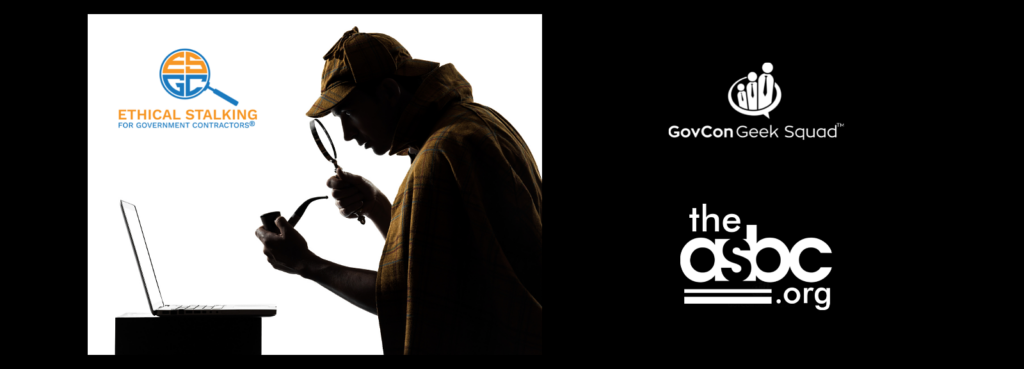Knowing Contracts and Contract Vehicles

Are you old enough to remember G.I. Joe cartoons? The setting was the mid-80’s, and the Joe’s and COBRA would battle it out on Saturday mornings while my kid brothers ate their Cheerios. Okay, I watched too, but that’s not the point! Hasbro had teamed up with the National Child Safety Council to produce a series of public service announcements featuring a main character giving safety tips. Things like never letting a stranger know you were home alone, and especially not giving them your address if you were. The closing line for each segment was always, “and knowing is half the battle.” ‘Knowing’ is very relevant to challenges and successes in Federal Contracting. Here’s my take when it comes to contracts and contract vehicles.
Too many companies waste good time and good money trying to find and win contract and subcontract opportunities. Not knowing or understanding the difference between Customer and Buyer, is a recurring topic in Ethical Stalking for Government Contractors programs. Using Classification Codes, Organization ID’s or Procurement Methods out-of-context, can stymie decision-making and diminish your ability to achieve an information advantage.
So, what’s the big deal about contracts and contract vehicles? Let’s start with the element of positioning. When federal agencies execute actions above the Micropurchase Threshold (MPT), they are typically required to create a record of the action that results in the creation of a Procurement Instrument Identifier (PIID)commonly known as a contract number. This coincides with the agency using either an Award or Indefinite Delivery Vehicle (IDV), or both. In a nutshell, this is the contractual framework between the Government and a Vendor.
Here’s where positioning comes into play.
In the Federal Procurement Data System, there are nine types of agreements and contracts recognized for FAR contracting. Each one falls into either the Award or IDV category. They are:
- Basic Ordering Agreement (BOA)
- Blanket Purchase Agreement (BPA)
- BPA Call
- Definitive Contract
- Delivery Order (DO)
- Federal Supply Schedule (FSS)
- Government Wide Acquisition Contract (GWAC)
- Indefinite Delivery Contract (IDC)
- Purchase Order (PO)
The positioning question is, how is your company positioned to pursue an opportunity as a prime, based on the instrument to be utilized? How about as a sub? More important, which instrument(s) do your customers and prospects prefer? Which one’s are less relevant or irrelevant to them?
By the way, that list is all-inclusive. These are the terms you will find in the FPDS data dictionary and, in the FAR. If you were expecting to see other types of instruments listed, then one of two truths is in play. The first is, the term you know is a variant of one of those you see above. The second is, the term you know is not associated with FAR contracting. Are you looking for:
- ID/IQ
- GSA Schedule
- MAS
- MAC
- MATOC
They are all there. Looking for BIC? It’s not an Award or IDV Type, but an OMB designation for vehicles that meet certain criteria, part of GSA’s Category Management acquisition strategy. How about SBIR? Not an Award or IDV Type, but the way agencies enter into agreements, contracts or grants with small businesses for research, expiremental or developmental work funded by the Federal Government. Since the start of FY20, agencies have leveraged every type of Award and IDV to make SBIR awards, except FSS and GWAC.
And if you are wondering about Set-Aside contracts, or Firm-Fixed Price contracts, those are not instrument types but attributes used in refining the type of buy being conducted.
Before I forget, not every dollar obligated by the Government goes to a contract vehicle. In fact, contract vehicle dollars barely earns the tag ‘most’ dollars. Almost as many fiscal dollars are obligated to the two standalone contracts on the list. They are not contract vehicles, nor are they orders placed against a contract vehicle, and they account for as much as half of the fiscal spend each year.
Last one, I promise.
Did you know the contract vehicle that accounts for the majority of fiscal spending on contract vehicles, is not a GSA Schedule or GWAC? Even combined, the fiscal spend for those two doesn’t come close to the fiscal spend of number one. While the top IDV achieves this as a result of multiple AND single-award actions, its single-award total, on its own, still make it the number one contract vehicle.
Without a good understanding of how your customers buy, it means you likely consume more information than necessary when it comes to market research and opportunity decision-making. This will drive up your cost of acquiring business (we call this C.A.B. Fare) and may be a factor in your company reaching the price competitive range, which can impact profitability.
What’s the solution? Develop the context needed to understand the terminology of Awards and IDVs as it relates to your company goals, and the customers and partners with whom you engage. This will allow you to eliminate the unnecessary distraction of buys being done in ways that don’t matter to you or your customer. It will also help you save time and money in your federal sector growth efforts.
You can learn about Awards and IDVs (and a lot more!) in our Ethical Stalking for Government Contractors Bootcamps, and leverage our expertise to help you with strategy during our REFUEL & REFOCUS (R&R) coaching sessions and retreats.
Peace, Health and Success,
Go-To-Guy Timberlake